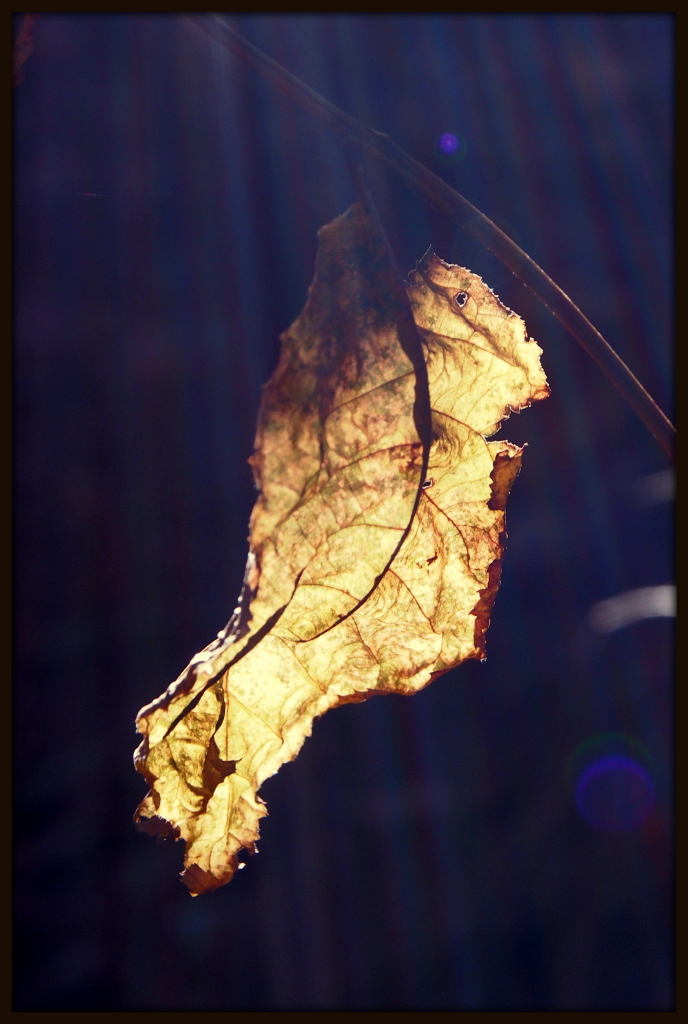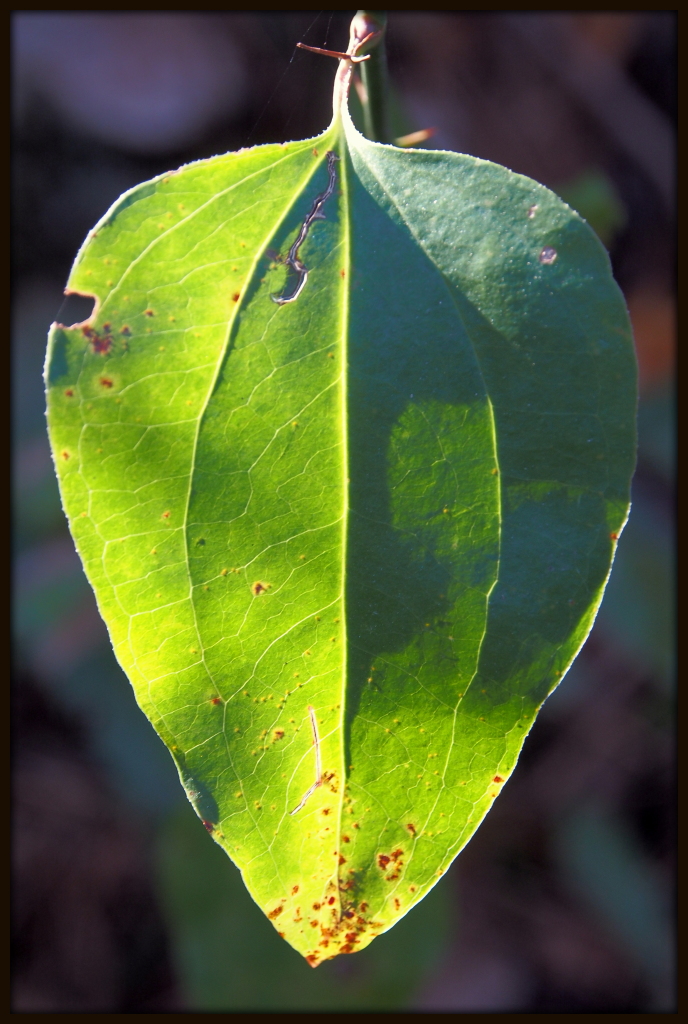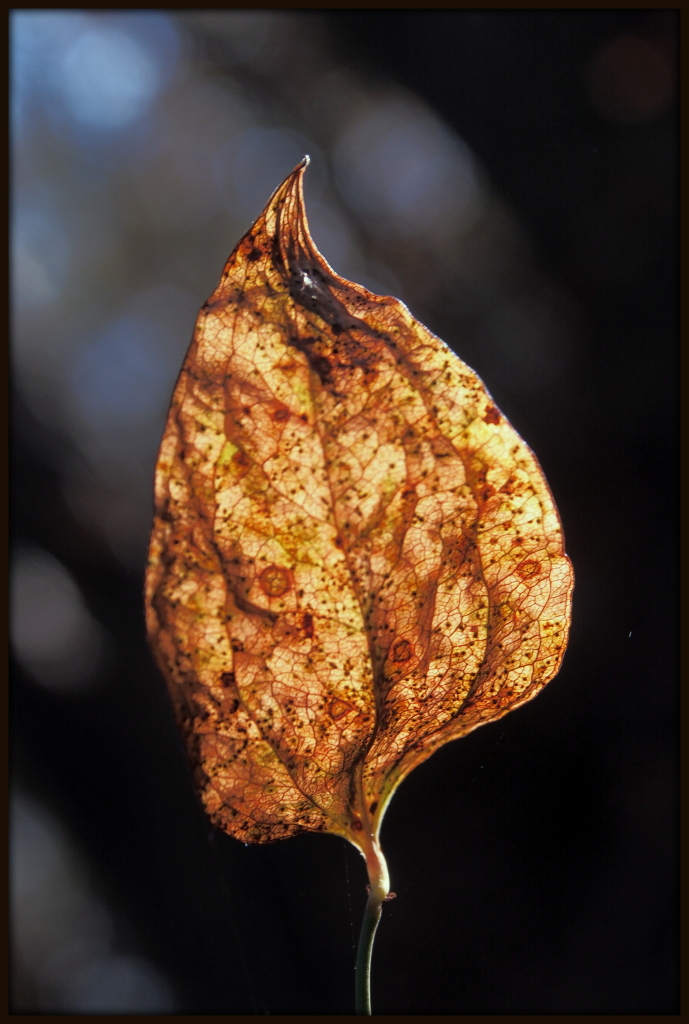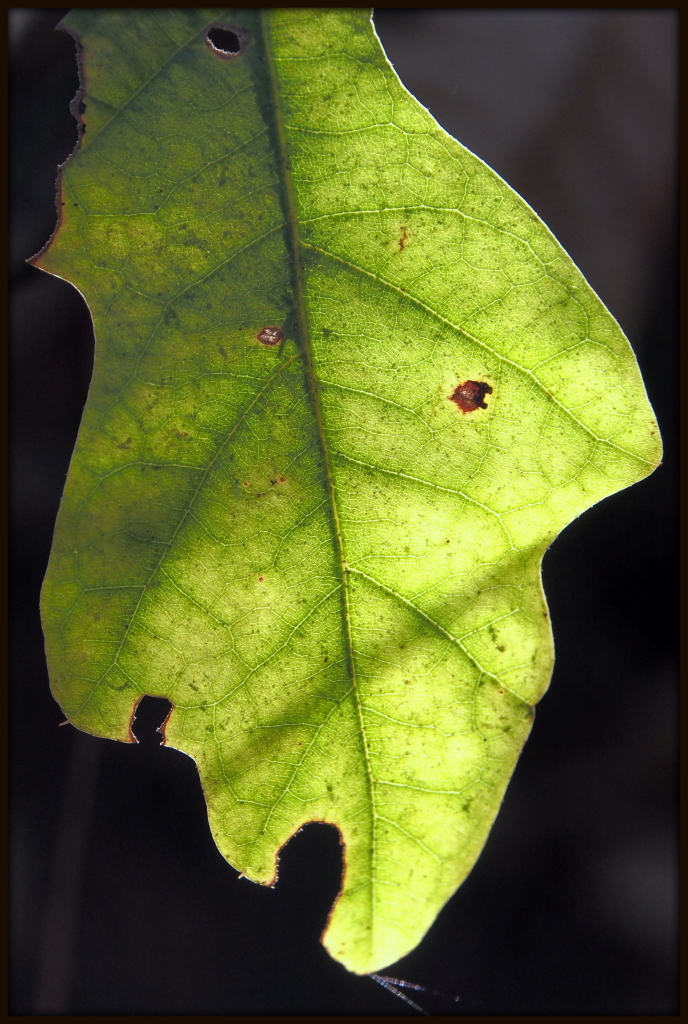On a dark, overcast, chilly Thanksgiving afternoon, I am grateful for a trio of greenbrier leaves that provided me with a moment of wonder as I made my way down Piney Woods Church Road.
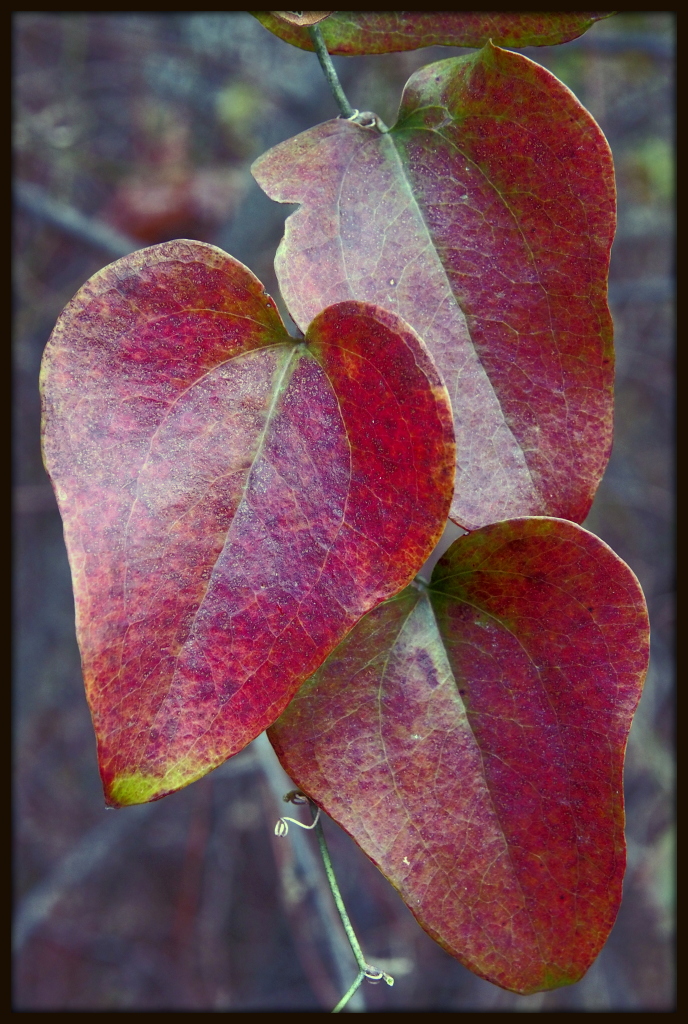
On a dark, overcast, chilly Thanksgiving afternoon, I am grateful for a trio of greenbrier leaves that provided me with a moment of wonder as I made my way down Piney Woods Church Road.

I paused on my walk down Piney Woods Church Road late this afternoon to notice a silken cocoon that was attached to the side of a greenbrier stem. I photographed it in the waning light, trusting that identification would be relatively easy back home. After thumbing through various field guides and looking at many photographs online, I finally found a tentative match: the six-spot Burnet moth, Zygaena filipendulae. Alas, this moth is found in Britain and continental Europe, not in North America. Its closest Georgia relative is the Grapeleaf Skeletonizer (Harrisina americana), a common crop pest and certainly a possibility. However, this caterpillar evidently spins a cocoon among the fallen leaves at the base of its host plants, rather than along a stem. I could not locate any photographs of its cocoon, so I still think it is a possibility. I suppose I will have to wait until spring and see what emerges.
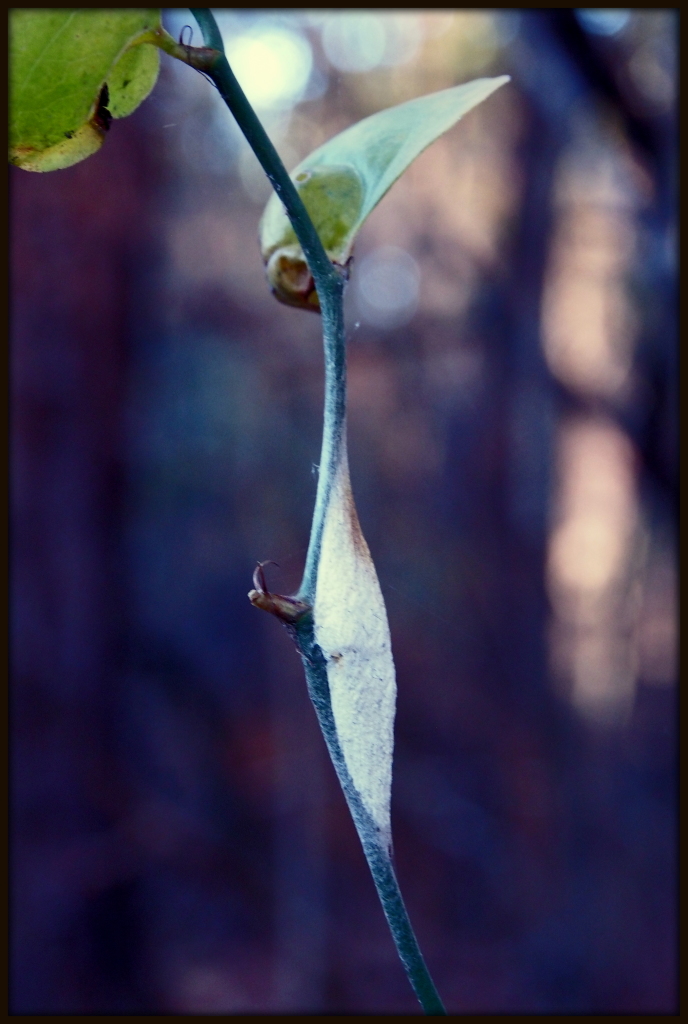
Today’s photographs from a late afternoon Piney Woods Church Road visit include two images of sky: first, as seen through a hole in a greenbrier leaf, and second, as reflected in a drainage ditch alongside the road. The tree in the reflection is a pecan, already leafless as winter draws nearer.
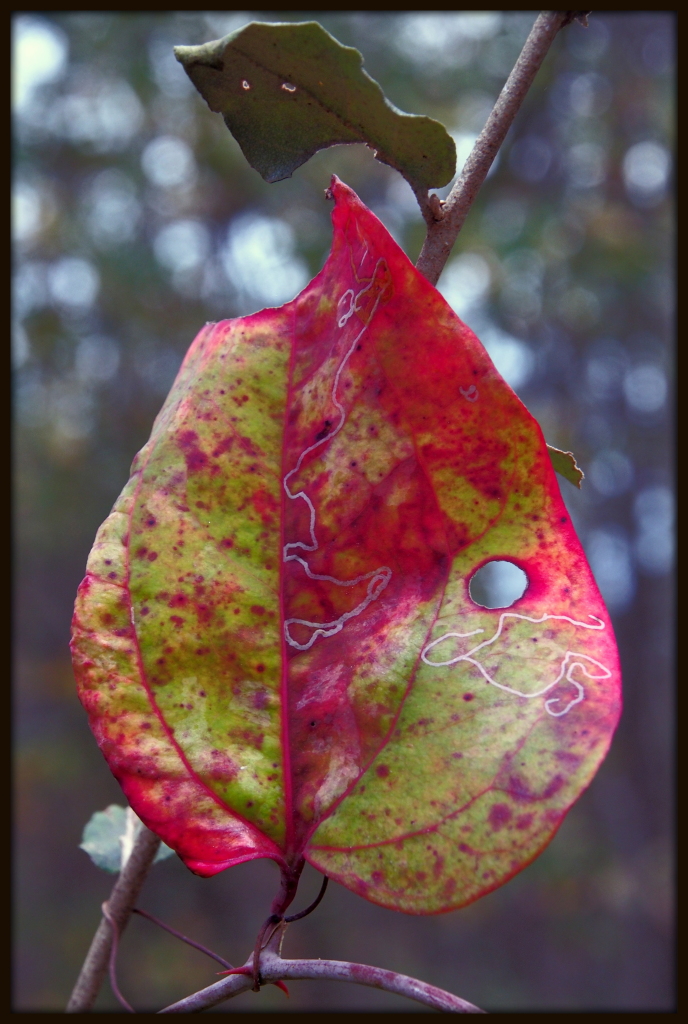
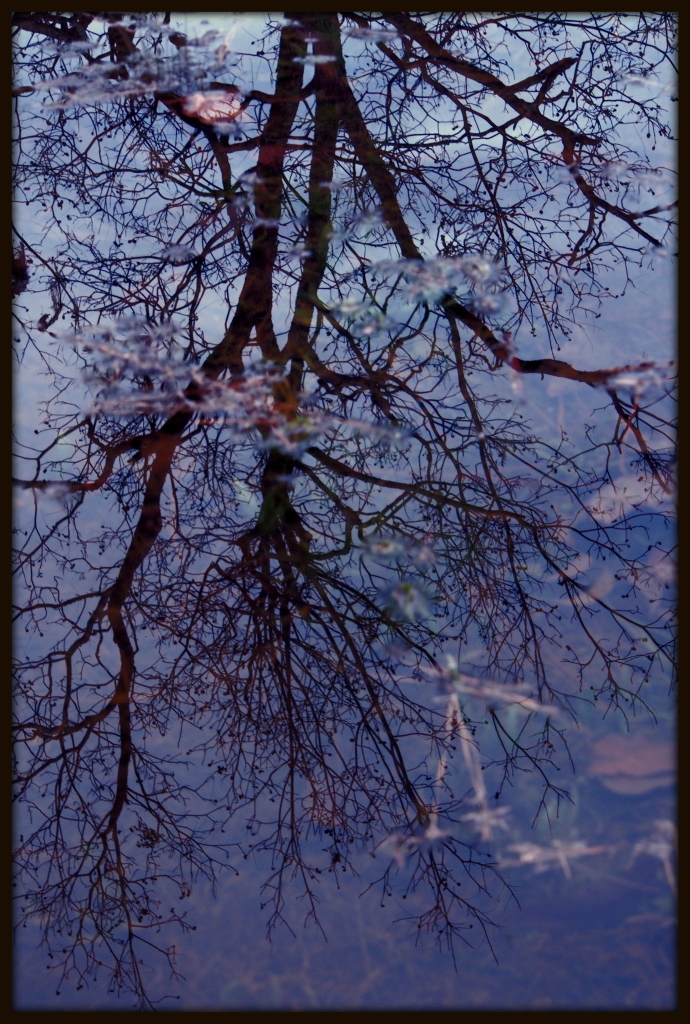
In the early morning, I encounter worlds in water drops still clinging to a naked branch….
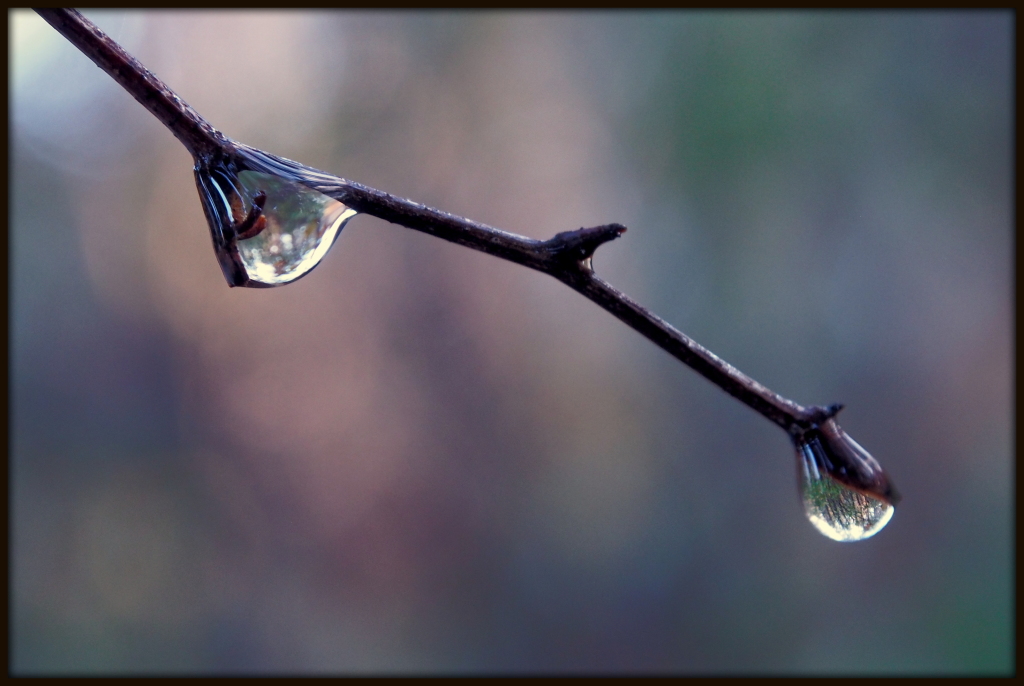
Between rainshowers today, I dashed out t take a few pictures of water droplet suspended from branches. Most did not turn out as hoped, but I enjoy this one quite a bit, with a colorful blurred leaf outline in the background. I took this photograph around noon; since then, skies have remained overcast with dark gray, accompanied by much-needed rain.
I also include a second photograph — yet another muscadine leaf, covered with water droplets. It doesn’t quite go with the oak — though it does, at least, grow with the oak. Yet it doesn’t quite seem to merit its own post, at the same time.

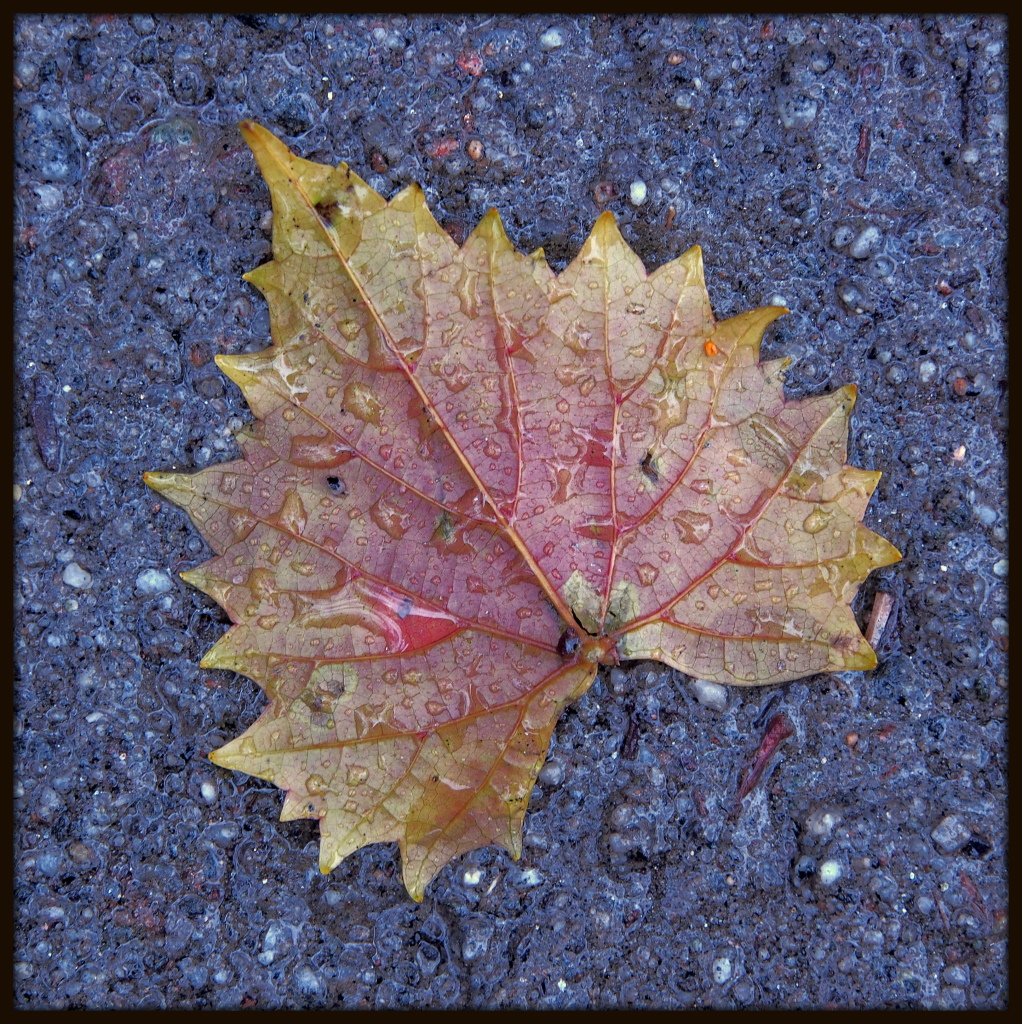
While half the country now lies under a blanket of white snow, along Piney Woods Church Road, a small white flower with a yellow center in the Asteraceae family has come into bloom. I have not idea what it is, but it adds a note of hope to winter’s approach, gracing the roadside with its delicate form.
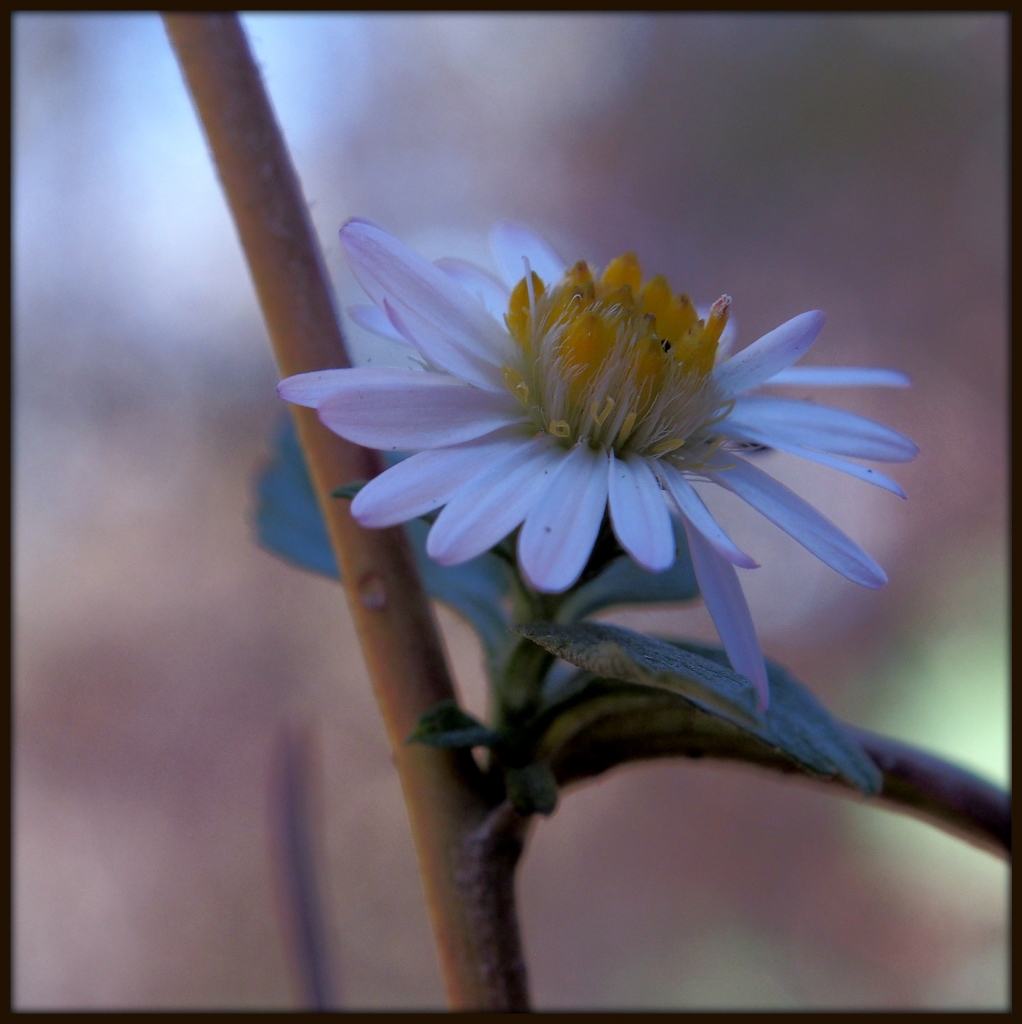
Two blades of a wood oat plant, one already browned, the other green turning to yellow, catch the mid-November late-afternoon light and beckon to the photographer-pilgrim.
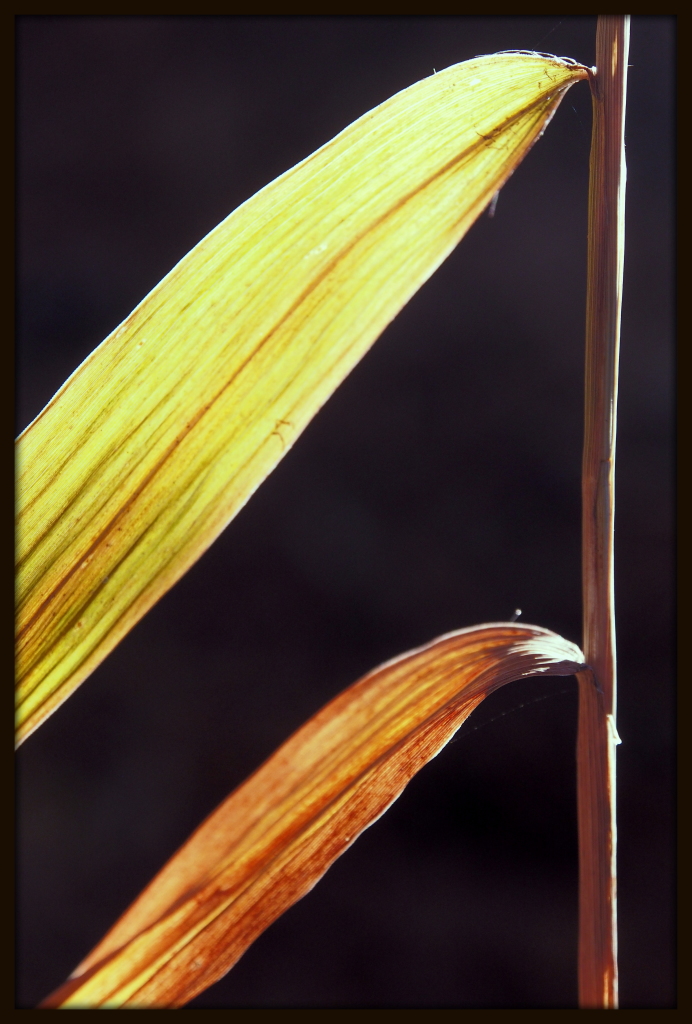
As the natural history term d’jour, a fascicle refers to a cluster of pine needles; various pine species have different numbers of needles in each grouping. Loblolly pines have fascicles of three. In this case, the pine needle fascicles are balancing on branches somewhere down Piney Woods Church Road.
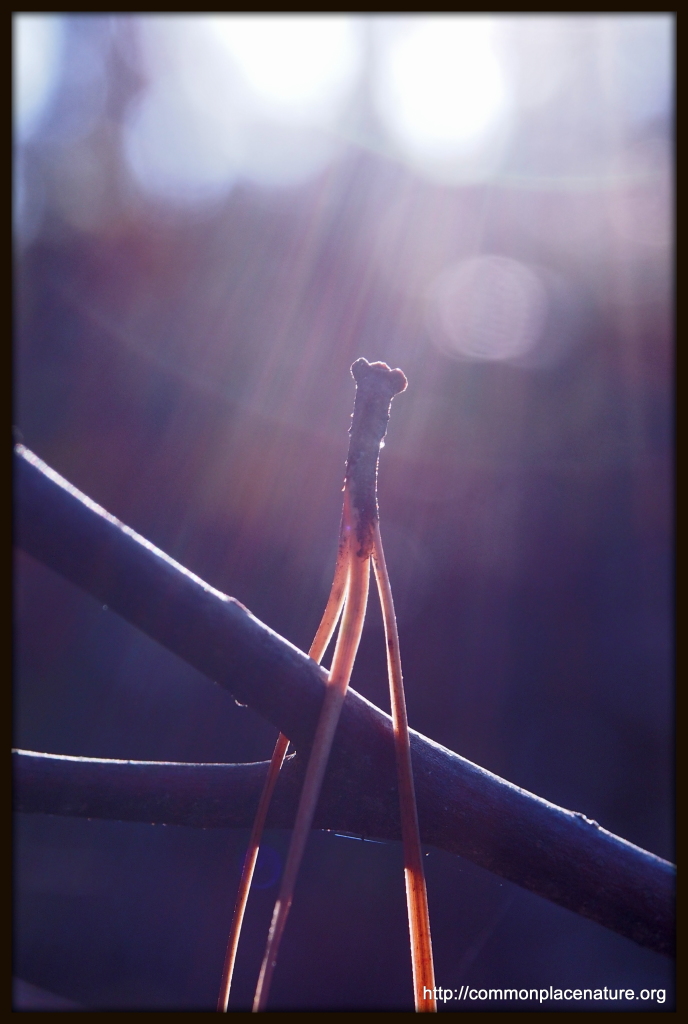
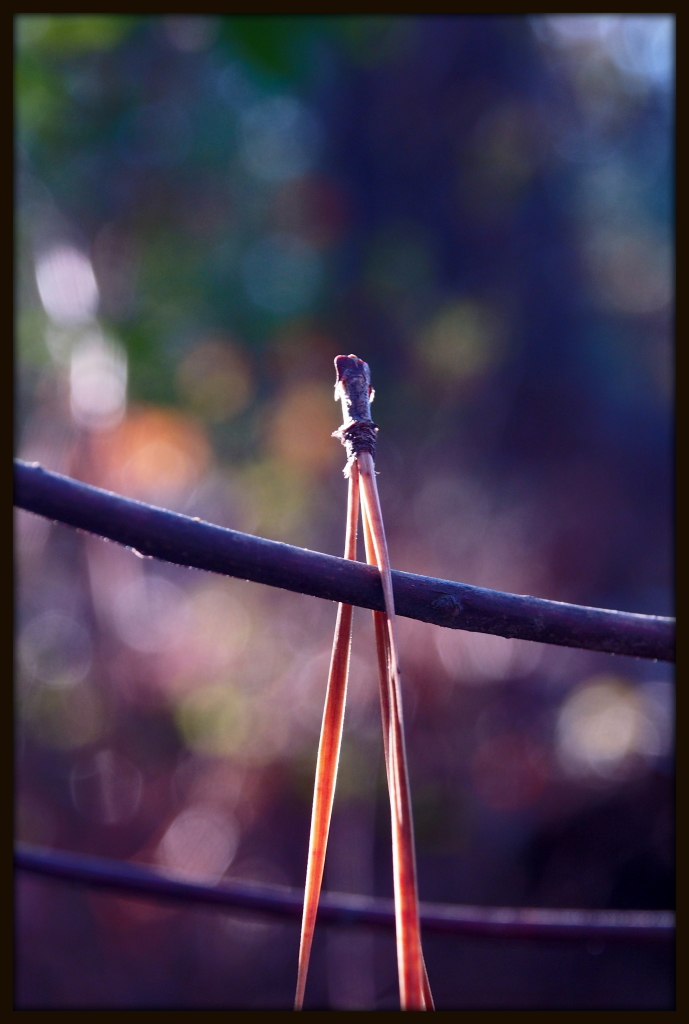
Whenever I need another surge of photographic inspiration, I know that I need only seek out a vine with tendrils, and some enchanting bit of calligraphy will emerge. I was drawn to the way the light played across the edge of a recurving tendril in this photograph from Piney Woods Church Road earlier this afternoon.
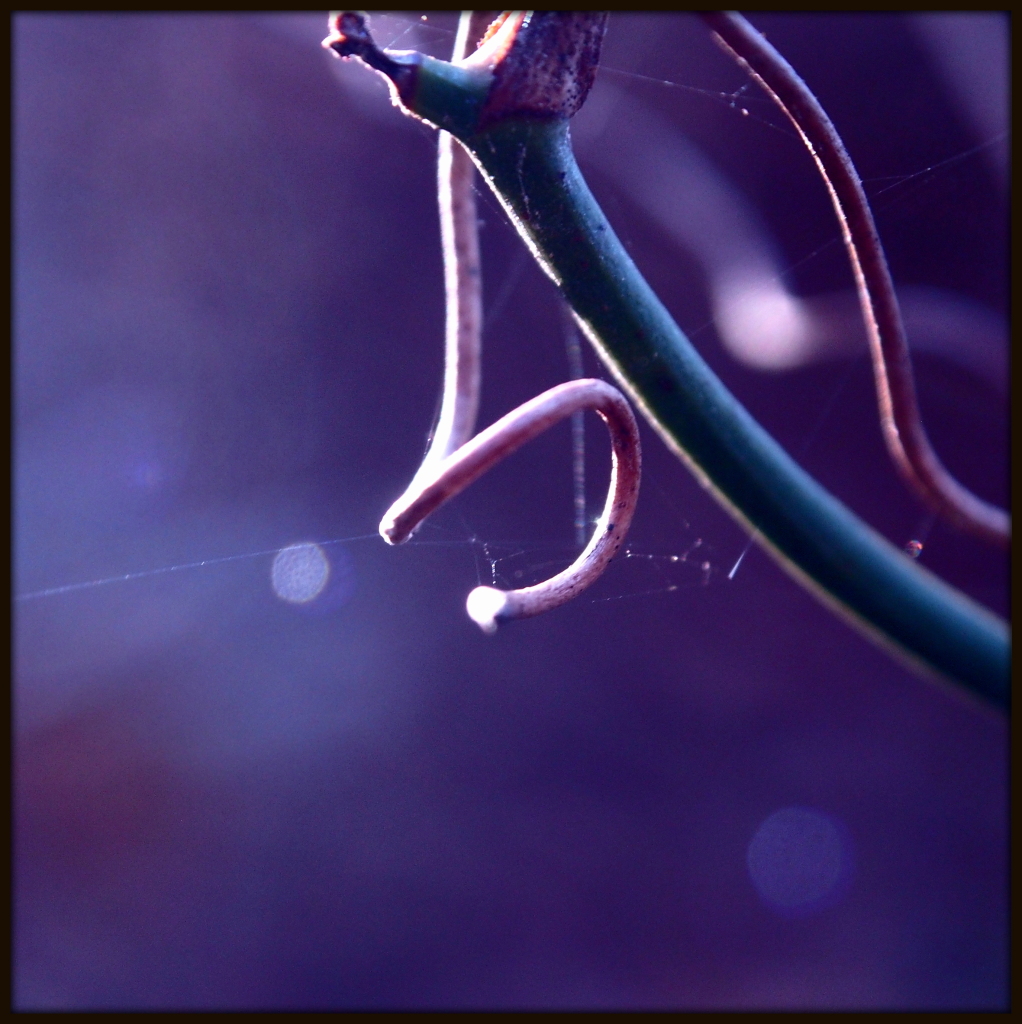
From my walk late this afternoon, here are four illuminated leaf portraits:
